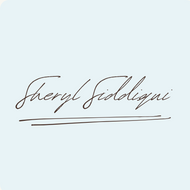Embracing the Creative Process: Artmaking Amidst Depression and Mental Illness
In the whirlwind of emotions that accompany bipolar disorder, finding solace in creativity can be both a lifeline and a challenge. As someone who navigates the highs and lows of bipolar disorder with mixed episodes, I have discovered that creating art can be a powerful tool for self-expression and healing, especially during periods of depression or low mood.
In my collaborative book, "The Creative Life Book: Reflections on the Art of Living a Fully Expressed Life" I delve into the transformative nature of artmaking, particularly through sketchbook art and open-ended creative play. When depression weighs heavy and motivation wanes, the simple act of creating art in a playful way can provide a sense of purpose and release.
One of the most liberating aspects of sketchbook art is its non-judgmental nature. Unlike traditional art forms where perfection is often pursued, sketchbook art thrives on imperfection. It is a space where mistakes are embraced, where the lines need not be straight, and where creativity knows no bounds. This freedom from expectations can be incredibly freeing, especially when grappling with feelings of inadequacy or self-doubt.
But what about the therapeutic benefits of artmaking during periods of depression? Experts in art therapy have long recognized the profound impact that creativity can have on mental well-being. According to Dr. Cathy Malchiodi, a leading expert in art therapy with decades of experience, "Engaging in creative activities, such as painting or drawing, can activate the brain's reward system, releasing dopamine and promoting feelings of pleasure and satisfaction. Artmaking has been demonstrated to be an effective form of self-expression and emotional processing, particularly for individuals navigating depression or mood disorders."
Artmaking also provides a welcome respite from the relentless pressure to perform and produce. In a world that often values productivity more than anything else, the act of creating art without the expectation of a finished product can be revolutionary. It is a reminder that art is not just about the result, but about the journey of self-discovery and exploration.
Artmaking is not just for people in a good mood; in fact, I would argue that it is extremely beneficial to individuals with mood disorders. I never wait for perfect moods to create art; instead, I make it a daily practice, regardless of how I feel. This consistent engagement with creativity has become my anchor amidst the turbulent seas of bipolar disorder and mixed episodes. Even on the darkest of days, when my mood is low and motivation is scarce, the act of creating art never fails to uplift me in some way.
Through art, I have learned that healing and self-expression are not reserved for moments of happiness or stability. Artmaking offers a sanctuary where I can confront my emotions, express myself authentically, and find solace in the creative process itself.
So, to anyone struggling with their mental health, I urge you not to wait for the perfect moment to create. Embrace the messy, imperfect beauty of artmaking, and let it become a source of comfort and strength, even in your darkest hours. Remember, you do not need to be in a good mood to create art; sometimes, creating art is what helps to lift your mood.
In the end, it is not about creating masterpieces; it is about honoring the journey, embracing vulnerability, and finding healing in the act of creation. So, pick up that paintbrush, grab your sketchbook, or simply let your imagination run wild. Your mental health journey is unique but know that art can be a powerful companion along the way.

